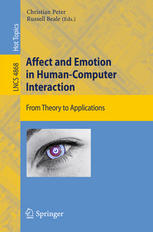

Most ebook files are in PDF format, so you can easily read them using various software such as Foxit Reader or directly on the Google Chrome browser.
Some ebook files are released by publishers in other formats such as .awz, .mobi, .epub, .fb2, etc. You may need to install specific software to read these formats on mobile/PC, such as Calibre.
Please read the tutorial at this link: https://ebookbell.com/faq
We offer FREE conversion to the popular formats you request; however, this may take some time. Therefore, right after payment, please email us, and we will try to provide the service as quickly as possible.
For some exceptional file formats or broken links (if any), please refrain from opening any disputes. Instead, email us first, and we will try to assist within a maximum of 6 hours.
EbookBell Team

4.7
76 reviewsAffect and emotion play an important role in our everyday lives: They are present whatever we do, wherever we are, and wherever we go, without us being aware of them for much of the time. When it comes to interaction, be it with humans, technology, or humans via technology, we suddenly become more aware of emotion, either by seeing the other’s emotional expression, or by not getting an emotional response while anticipating one.
Given this, it seems only sensible to explore affect and emotion in human-computer interaction, to investigate the underlying principles, to study the role they play, to develop methods to quantify them, and to finally build applications that make use of them. This is the research field for which, over ten years ago, Rosalind Picard coined the phrase "affective computing".
The present book provides an account of the latest work on a variety of aspects related to affect and emotion in human-technology interaction. It covers theoretical issues, user experience and design aspects as well as sensing issues, and reports on a number of affective applications that have been developed in recent years.